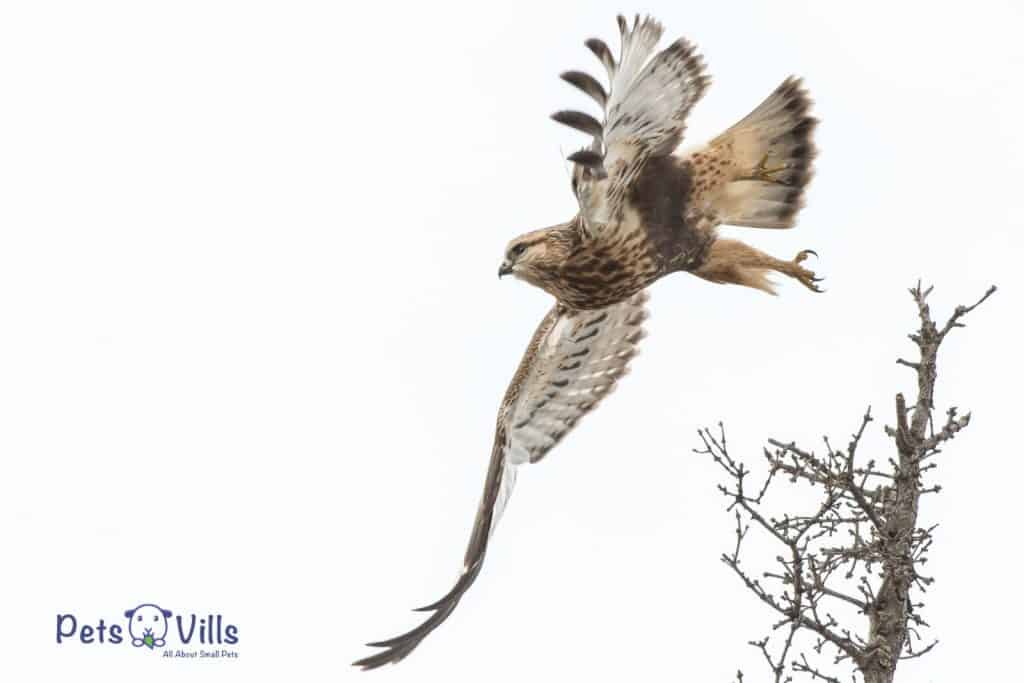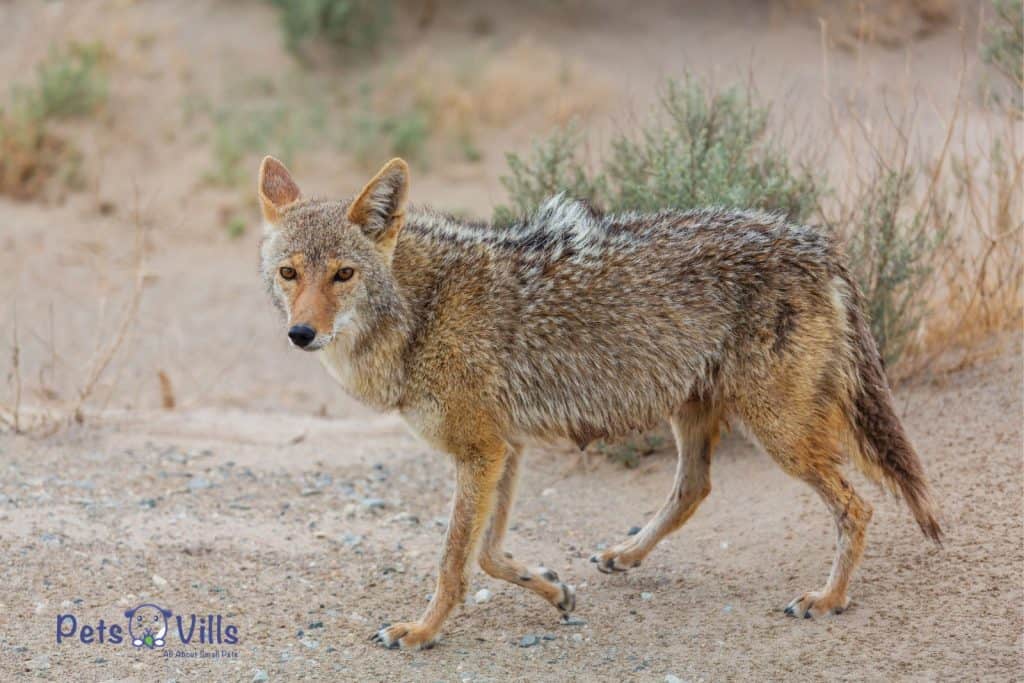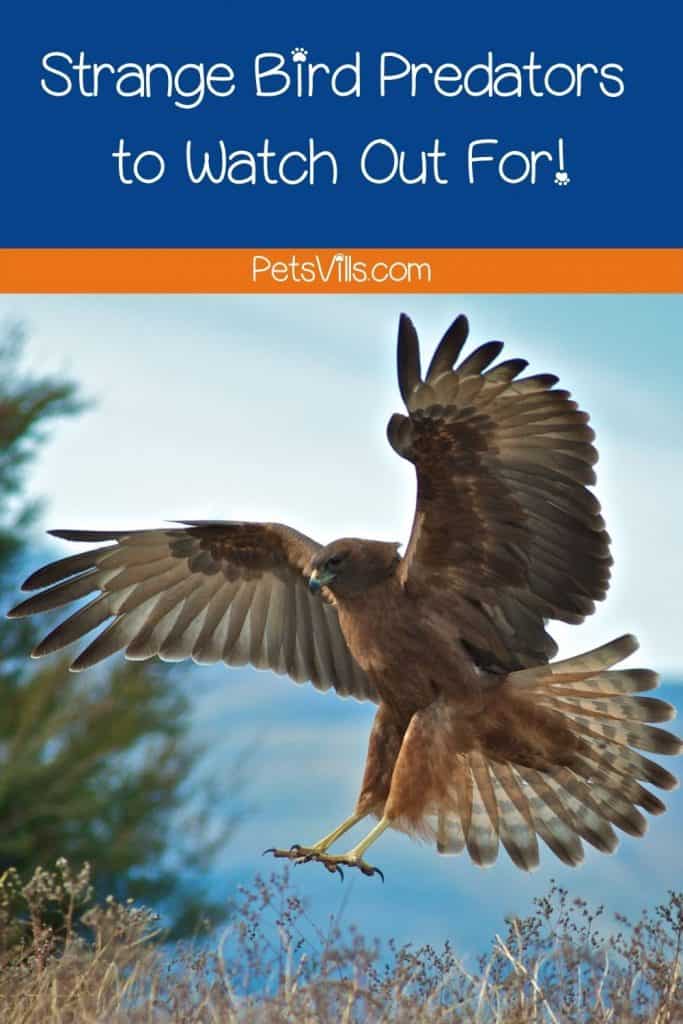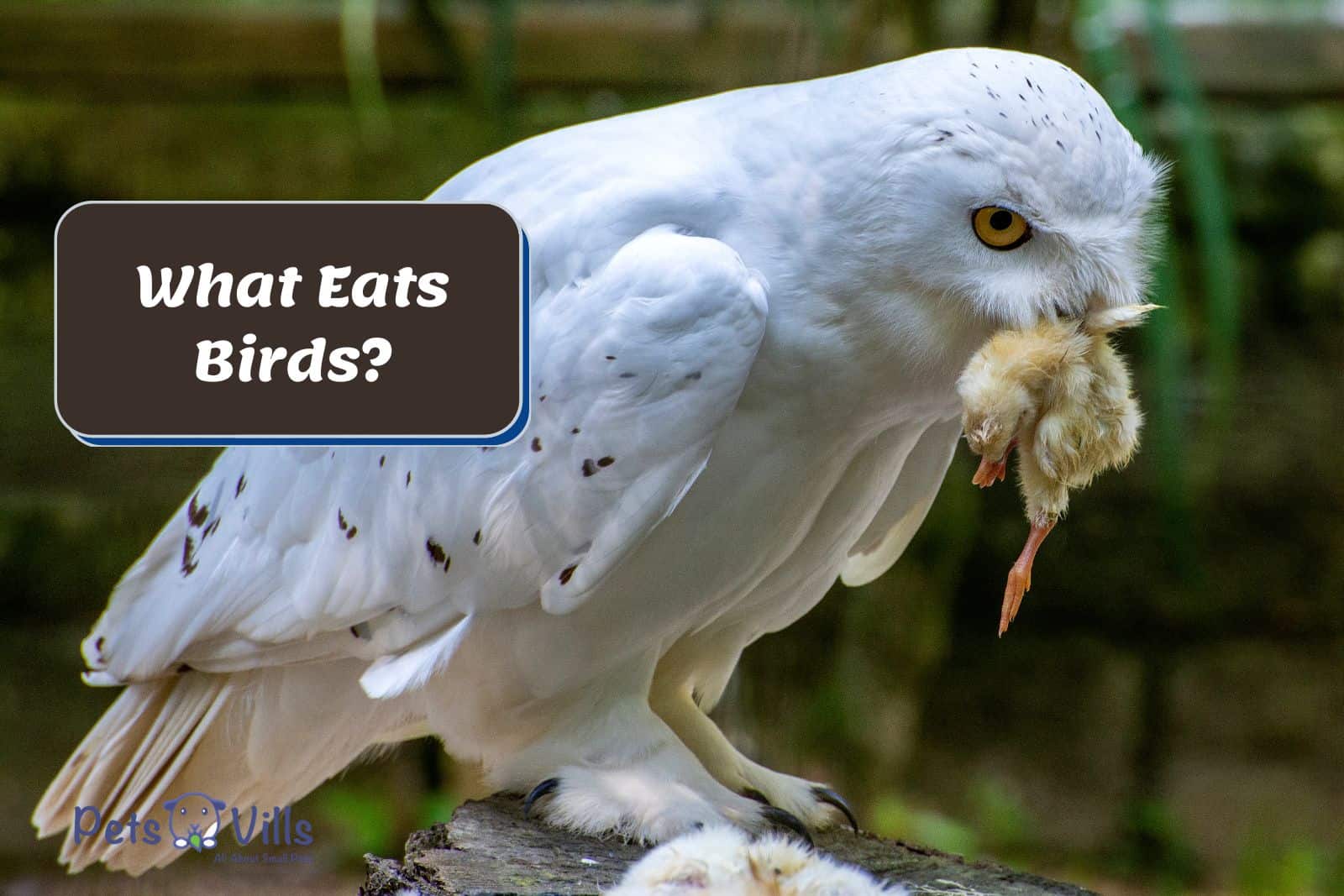Whether or not you’re a bird watcher, you may be surprised to learn what animals eat birds.
From hawks and eagles to raccoons and skunks, just about any carnivore will take advantage of an opportunity to gobble up a feathered friend.
In some cases, smaller predators such as coyotes or weasels may also prey on birds. So next time you’re out in nature, keep your eyes peeled for evidence of bird predation!
READ MORE: Why Do Baby Birds Die?
Table of Contents
A Bird Eat Bird World

Birds are known for being gentle creatures, but some birds are actually quite fierce predators. One well-known example is the hawk, which uses its powerful talons to kill smaller birds.
However, there are also many smaller birds that hunt other birds. The common thrush, for example, is an accomplished hunter of insects and small rodents.
Some birds are known to be particularly adept at hunting other birds. One such bird is the falcon, which uses its sharp eyesight and powerful wings to dive down on unsuspecting prey.
Another bird that regularly preys on other birds is the kingfisher, which uses its long, sharp bill to spear fish out of the water. [1]
While it may seem shocking, this behavior is actually quite common in the animal kingdom; after all, predators must eat to survive.
Check out this video!
READ MORE: Can budgies eat sunflower seeds?
Strange Bird Predators
Every bird lover knows that there are a variety of predators that can pose a threat to their feathered friends. But did you know that some of these predators aren’t exactly what you would expect?
Here are unlikely bird predators to watch out for:
1. Serpents
It’s not uncommon for snakes to go after small birds, and they can be particularly dangerous to nestlings. If you see a snake in your yard, make sure to keep an eye on any nearby bird nests.
Check out this horrifying video.
2. Plants
Most plants rely on sunlight and water to grow, but there are a select few that have evolved to feed on animals.
These so-called “carnivorous plants” can be found in habitats around the world, from murky swamps to sunny mountain meadows.
While the vast majority of carnivorous plants trap insects, there are a handful of species that prey on larger animals, including birds.
One of the most well-known examples is Darwin’s pitcher plant, which grows in the wet forests of Madagascar.
This plant lures in small birds with sweet nectar, then traps them in a deep pitcher filled with digestive fluids. Over the course of several days, the bird’s body is broken down and absorbed by the plant, providing it with vital nutrients.
Other plants that are known to eat birds include the Venus flytrap and the sundew. While these carnivorous plants are certainly fascinating, they are also quite rare, so don’t worry too much about your backyard bird feeder being raided anytime soon.
Check out this video.
READ MORE: Where do birds go when it rains?
3. Sea Anemones
Sea anemones are beautiful, but dangerous creatures. These carnivorous animals use their stinging tentacles to paralyze and kill their prey.
Fish, crustaceans, and even small birds are all on the menu for sea anemones. The anemone will consume its prey whole, using digestive enzymes to break down the victim’s body.
While most anemones stick to hunting in the water, there is one species known to climb out of the tidepools and onto land in search of a meal.
The aptly named “devil’s Breath” anemone has been known to snare small birds that come too close, dragging them under the water to be devoured. So while they may be pretty to look at, it’s best to keep your distance from these deadly creatures of the sea.
Fish: Although it may seem strange, there are actually a number of fish that regularly eat birds. Perhaps the most well-known of these is the piranha, a vicious predator found in the rivers of South America.
Piranhas typically hunt in groups, and they have been known to strip a human victim of flesh in minutes. However, they will also eat just about any other animal they can find, including birds.
Predatory fish like sharks might catch oceanic birds in the world of the water. Another equally surprising fish that eats birds is the pike.
These large predators are found in freshwater lakes and streams throughout Europe and North America. Though they primarily feed on smaller fish, they will also consume ducks, geese, and other small birds.
With their long, sharp teeth and powerful jaws, pikes are capable of inflicting serious injuries on their avian prey. Finally, the sturgeon is another fish that regularly consumes birds.
These massive creatures can grow to over 20 feet in length and weigh over a ton. While they primarily eat smaller fish and invertebrates, sturgeons will also feed on the occasional bird that swims too close to their razor-sharp teeth.
Seals: It’s a common misconception that seals eat fish. While it’s true that seals are proficient hunters of the underwater world, they are actually opportunistic feeders and will eat just about anything they can catch, including birds.
This may come as a surprise to many people, but there are a number of reasons why seals would choose to feast on feathered friends.
Bugs: While tons of birds are insectivorous, small birds can easily also come to be targeted for bugs themselves.
Other large bugs, like the Goliath bird-eating arachnid, can easily be actually far more aggressive regarding selecting avian prey and can definitely strike at any available bird.
Check how the sea anemone eats the bird.
4. Toads
We all know that frogs and toads can be voracious eaters, but did you know that some toads will even eat birds? That’s right, certain species of toads have been known to hunt down and eat small birds.
While this might sound shocking, it’s actually not all that uncommon in the animal kingdom. Many predators will target the young of their prey, and birds are no exception.
In fact, many animals will eat baby birds if they can get their hands on them. However, what sets toads apart is their ability to take down adult birds.
Toads have a long sticky tongue that they use to snag flying insects out of the air. They can also use this tongue to snatch up small birds that are unlucky enough to cross their path.
So, if you ever see a toad with a bird in its mouth, don’t be too alarmed. It’s just nature at work.
READ MORE: Where to hang hummingbird feeder?
What Eats Birds in the Desert?
Birds are a vital part of the desert ecosystem. They help to pollinate plants, control insect populations, and disperse seeds. However, birds are also a convenient food source for many desert animals.

Snakes, lizards, and rodents all eat birds, and larger predators such as coyotes and bobcats will often target them as well. Even Scorpions and tarantulas will opportunistically eat birds that they come across.
In general, any animal that is fast enough to catch a bird can make a meal out of it. Given the large number of animals that prey on birds, it is no wonder that they are often seen as elusive and hard to spot in the desert landscape.
Biggest Threat to Birds
Birds are some of the most popular animals in the world, and it’s easy to see why. They come in a dazzling array of colors and patterns, they can fly, and they often have beautiful songs.
However, birds are also incredibly vulnerable, and humans are their biggest threat. The biggest dangers to birds are habitat loss and fragmentation, as well as introduced species.
Habitat loss occurs when natural habitats are destroyed for development or agriculture. This can make it difficult for birds to find food and shelter, and it also reduces the amount of space available for them to raise their young.
Fragmented habitats are those that have been divided into small pieces, making it hard for birds to move around and find mates.
Introduced species are animals or plants that have been brought into an area by humans, either intentionally or accidentally.
These species can compete with native birds for food and habitat, and they can also carry diseases that can make birds sick.
By working to protect bird habitats and promote sustainable practices, we can ensure that these amazing creatures will continue to grace our planet for generations to come.
Conclusion
So what eats birds? The answer is a little bit of everything! From small mammals to large raptors, there are predators out there that enjoy a nice bird meal.
However, humans pose the biggest threat to birds, as they can destroy their habitats and introduce deadly diseases into their populations.
By understanding who preys on these animals, we can help protect them from becoming endangered or extinct.

What eat birds? Let us know your opinion about this topic below!
Resources
1. Kingfisher | San Diego Zoo Animals & Plants [Internet]. Sandiegozoo.org. 2013. Available from: https://animals.sandiegozoo.org/animals/kingfisher
2. Carnivorous Plants [Internet]. www2.palomar.edu. Available from: https://www2.palomar.edu/users/warmstrong/carnivor.htm
Barry Stingmore is a British content writer living in Fuerteventura, Spain. An animal lover at heart, he shares his home with a dog and four rescue cats and has a passion for writing about animals big and small.
Barry loves finding answers to your animal-related questions, the more research involved the better! You can rely on him to find the facts.
Find him on FACEBOOK, TWITTER AND Linkedin
Read his latest ARTICLES.
Find more about him HERE.

